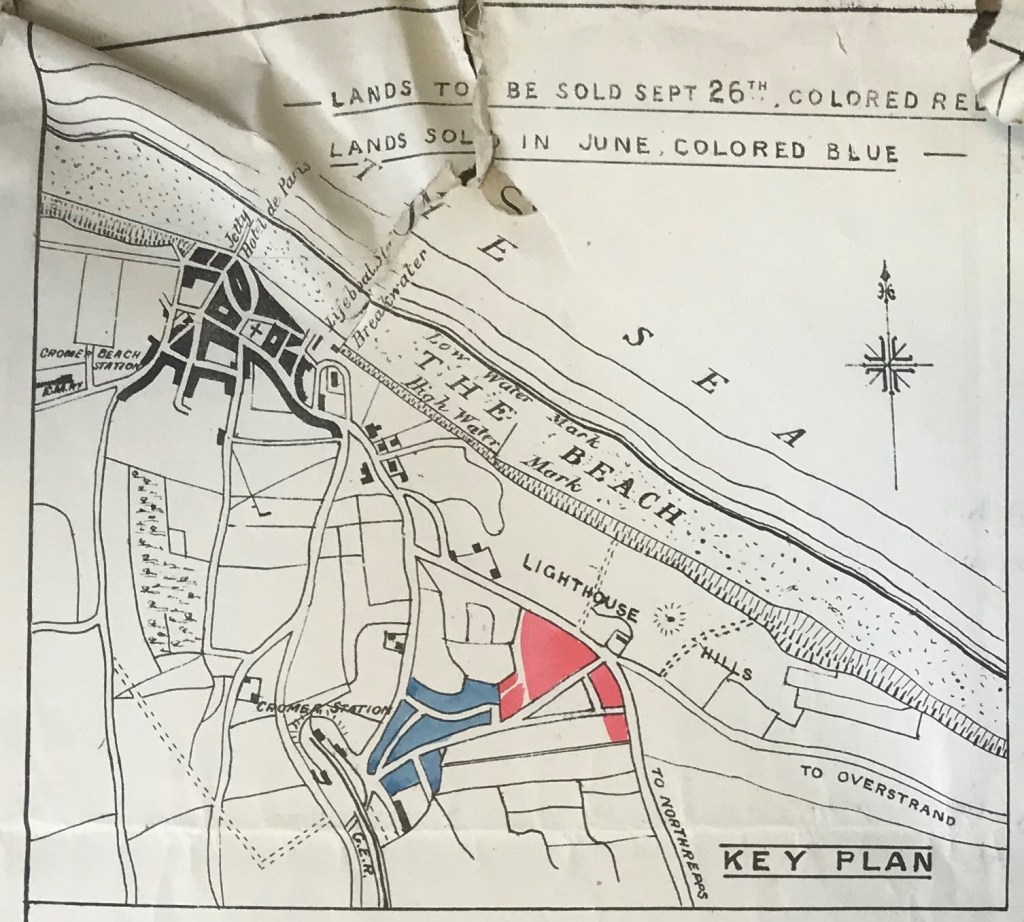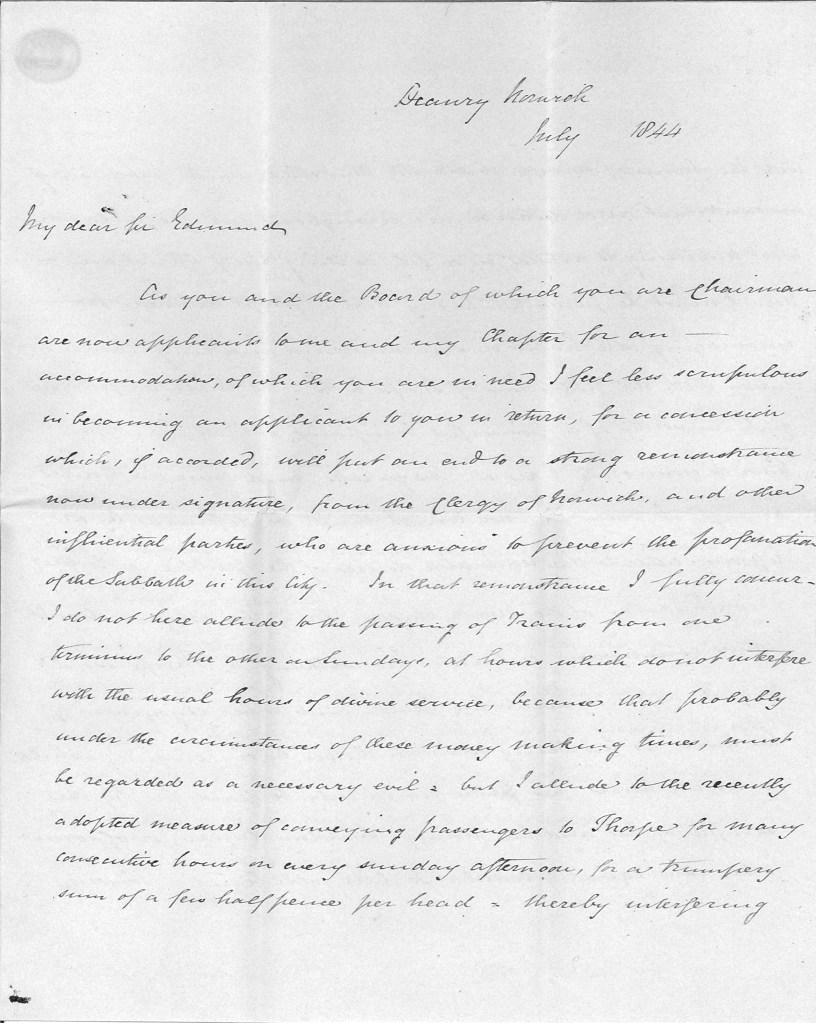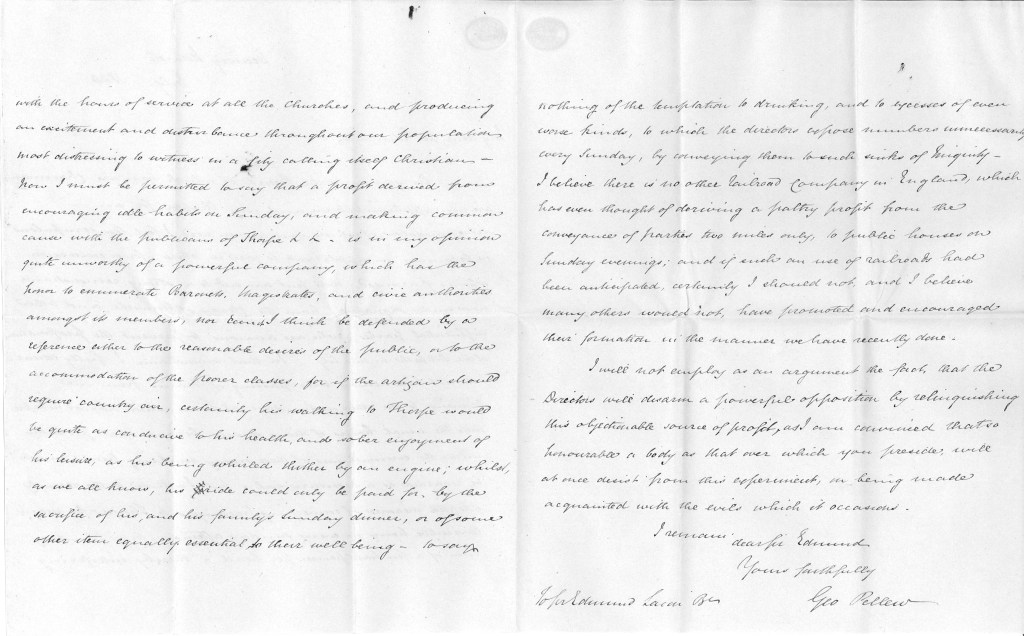The First Line
The coming of the railways to Norfolk revolutionized many aspects of county life. The first railway from London to Norfolk arrived in the 1840s, when the line was opened via Wymondham and Cambridge and, from 1849, the Great Eastern Railway linked Norwich to London, with shorter journey times.
Parliamentary Procedure
Before any new railway was built, Parliament had to decide whether it was necessary and also if it were feasible in terms of engineering and finance. Between 1844 and 1846, over 700 individuals and companies presented bills to Parliament requesting Private Acts to build railways. Parliament authorized 8,950 miles of railway between 1845 and 1847 and, by 1910, 20,000 miles of railway had been built in Britain.
Proceedings on railway bills could be complex and many failed at their first attempt. There was often intense competition between railway companies with rival schemes. Parliamentary proceedings concerning a proposed railway would hear from many people, including the engineer, company officials, local merchants, tradesmen and others affected by the proposed route.
The Case for Cromer
The Great Eastern Railway opened a line to Cromer in 1887, but, owing to a steep escarpment, the station was a long way out of town, which did not satisfy all the inhabitants. A parliamentary proceedings book held by the Parliamentary Archives reports the evidence of James Curtis, a Cromer fish merchant, on the Central Norfolk Railway Bill in 1881. Curtis clearly thought that linking Norfolk to the Midlands by railway, with a station closer to Cromer town, would allow him to send his fish to markets in Birmingham and Manchester. Curtis had to go to London to give his evidence, and the proceedings book records that, on the night before he left, the other fisherman at Cromer, who wanted the new railway line, urged him to ‘be sure and do all you can for us’. At the height of the railway boom in the 1840s, so much evidence was needed to be collected for railway bills, that temporary wooden booths were set up outside Westminster! Curtis’s evidence was successful and Cromer Beach station, on the Midland and Great Northern Joint Railway, opened in 1887. The track approached Cromer from the west, avoiding the steep hill, and ran into the centre of town.

Problems with Sunday Trains
Norfolk prospered in many ways as a result of the railways: merchants could get their goods to a wider British market and passenger trains meant that people living in the towns could enjoy days out by the seaside. However, not everyone was enthusiastic about the new railways and some voiced moral concerns. In 1844, the Dean of Norwich Cathedral, who was ‘anxious to prevent the profanation of the Sabbath in the city…’, wrote to Mr Edmund Lacon, chairman of the Railway Board:
‘I allude to the recently adopted measure of conveying passengers to Thorpe for many consecutive hours on every Sunday afternoon, for a trumpery sum of a few halfpence per head thereby interfering with the hours of divine service at all the churches, and producing an excitement and disturbance throughout our populations most distressing to witness in a City calling itself Christian…’
Dean of Norwich, 1844. NRO DCN 120/2Q/1
he continues
‘his ride could only be paid for by sacrifice of his and his family’s Sunday dinner or of some other item equally essential to their well-being – to say nothing of the temptation to drinking and to excesses of even worse kinds to which the directors expose numbers unnecessarily every Sunday by taking them to such sinks of Iniquity’
Dean of Norwich, 1844. NRO DCN 120/2Q/1
















Thanks Victoria, interesting as always…will there be a ‘Part 2’ as to whether the Dean got a reply from Mr Lacon to his letter?
LikeLike
Thanks for your reply, Alan. We’ll let you know!
LikeLike
Hi Alan, there is no indication in this bundle of letters of a reply from Mr Lacon. However, we do hold a large number of letters from and to the Dean (within DCN 120) so if you are interested it may be worth visiting us and having a look- do let us know if you find anything!
LikeLike